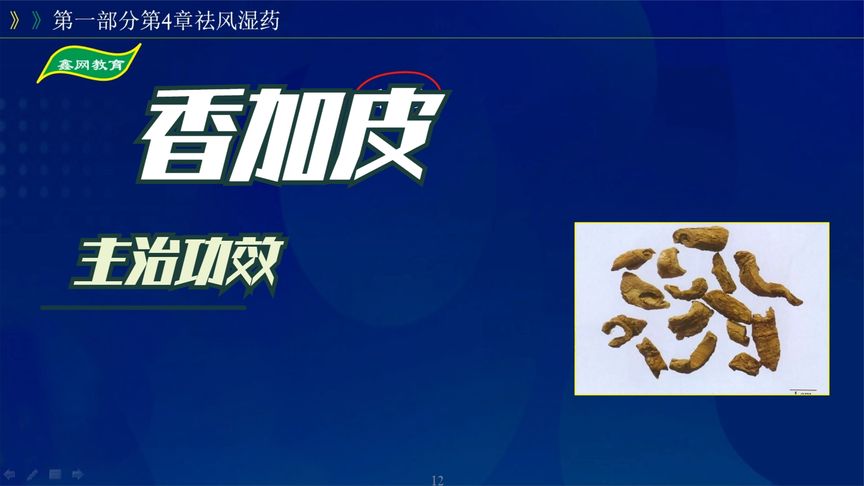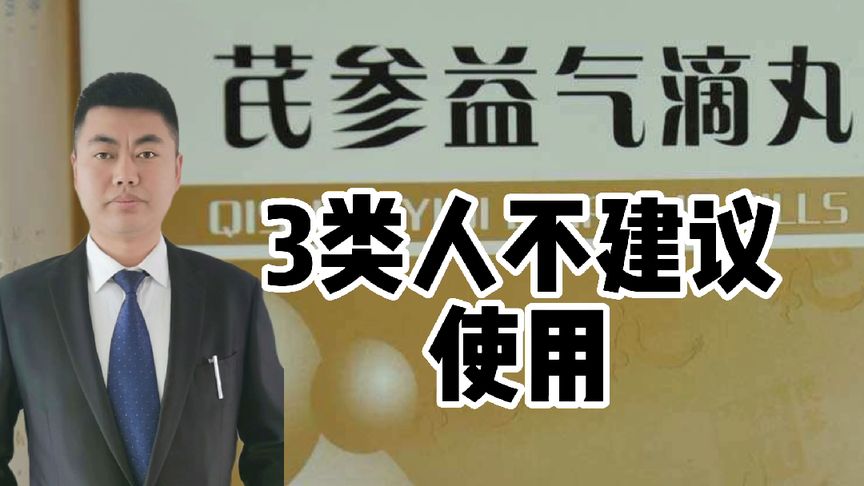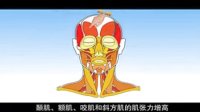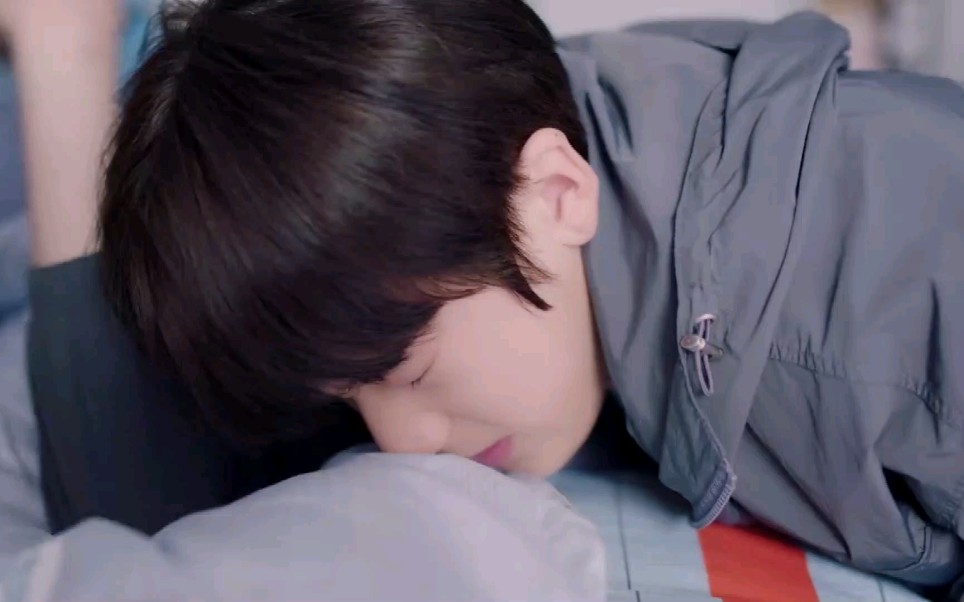本文目录:
2017 International Swimming Championships schedule
最佳答案:
# 跳水项目
- 7月14日:17:00-20:00男子一米板预赛;22:00-次日00:30女子一米板预赛。
- 7月15日:16:00-18:00男子双人三米板预赛;19:00-20:30混合双人十米台决赛;22:00-23:15女子一米板决赛;次日00:30-次日02:00男子双人三米板决赛。
- 7月16日:16:00-18:00女子双人十米台预赛;21:30-23:00男子一米板决赛;次日00:30-次日02:00女子双人十米台决赛。
- 7月17日:16:00-18:00女子双人三米板预赛;19:00-20:45男子双人十米台预赛;22:00-23:15女子双人三米板决赛;次日00:30-次日02:00男子双人十米台决赛。
- 7月18日:16:00-18:30女子十米台预赛;21:30-23:00女子十米台半决赛;次日00:30-次日02:00男女混合全能(3米/10米)决赛。
- 7月22日:20:00-21:30混合双人三米板决赛;23:00-次日01:00男子十米台决赛。
# 花样游泳项目
- 7月14日:17:00-19:30女子单人技术自选预赛;22:00-次日00:00女子双人技术自选预赛。
- 7月15日:17:00-18:30女子单人技术自选决赛;次日01:00-次日02:00男女混合双人技术自选预赛。
- 7月16日:17:00-18:30女子双人技术自选决赛;次日01:00-次日03:30女子集体技术自选预赛。
- 7月17日:17:00-18:30男女混合双人技术自选决赛;次日01:00-次日03:30女子单人自由组合预赛。
- 7月18日:17:00-18:30女子集体技术自选决赛;次日01:00-次日03:30女子双人自由自选预赛。
- 7月22日:17:00-18:30女子自由组合决赛;次日01:00-次日02:30男女混合双人自由自选决赛。
# 游泳项目
- 7月23日:15:30女子100米蝶泳、男子400米自由泳、女子200米个人混合泳等预赛;23:30男子400米自由泳、女子100米蝶泳、男子50米蝶泳等决赛。
- 7月24日:15:30女子100米仰泳、男子100米仰泳、女子100米蛙泳等预赛;23:30男子100米蛙泳、女子100米蝶泳、男子100米仰泳等决赛。
- 7月25日:15:30男子50米蛙泳、女子200米自由泳、男子200米蝶泳等预赛;23:30男子200米自由泳、女子1500米自由泳、男子50米蛙泳等决赛。
- 7月26日:15:30女子50米仰泳预赛;23:30女子200米自由泳、男子100米自由泳、男子200米混合泳半决赛。
- 7月27日:15:30女子100米自由泳预赛;23:30男子200米混合泳决赛,男子200米蛙泳、女子200米蛙泳半决赛。
- 7月28日:15:30男子50米自由泳预赛。
- 7月29日:15:30女子50米自由泳预赛;女子50米蛙泳半决赛。
- 7月30日:15:30女子400米混合泳预赛。
有没有关于职业和运动的英语单词
艺术体操术语
Abrupt interruption of the music 突然中断
Absence 缺少
Absence of a formation 缺少一个队形
Absence of balance 缺乏平衡
Absence of contact 无接触
Absence of harmony 不和谐
Absence of unity 缺乏一致性
Absence of variety 缺乏多样
Acrobatic 技巧动作
Acrobatic elements 技巧动作
Active bounces 主动拍球
Aesthetic 美的
A "grasped" ball 抓球
A knot in the rope 绳打结
Alteration of the formation 队形改变
Alteration of the pattern formed by the ribbon 带的图形改变
Alteration of the trajectory 改变抛物线
Amplitude 幅度
Ankle 踝
A position on the floor 地上一个姿势
Apparatus 器械
Apparatus balanced on one part of the body 器械在身体某一部位的平衡
Apparatus held 持器械
Apparatus held for a long time 长时间持器械
Apparatus do not conform to the specifications 器械不合规格
Appropriate symbols 正确符号
Arabesque 阿拉贝斯
Arch jump 挺身跳
Arms too far apart during the mills 小五花时手臂距离过大
Artistic Value 艺术值
A series of tosses 一串小抛
Aside from hands 除手以外
A spirit of cooperation 合作精神
"Assisted rolls" 有帮助的滚动
Assistant Judge 辅助裁判
Asymmetric movements 不对称动作
Asymmetric throw and catches 不对称的抛和接
At the end of the exercise 动作结束时
At the horizontal 在水平位置
Attitude 阿提丢
Back bend of the trunk 体后屈
Back splits 后劈腿
Back splits without help 无帮助后劈腿
Backward 向后
Balance 平衡
Balance on one knee 单膝支撑的平衡
Ball 球
Ball held against the forearm 球靠在前臂上
Base score 基础分
Basic characteristics 特征
Basic composition 基本编排
Basic technique 基本技术
Be coordinated with the apparatus 与器械相结合
Behind the back 在背后
Being in suspension 悬空
Below horizontal 水平以下
Below the leg(s) 腿下
Body movement elements 动作要素
Boomerang roll (roll with return ) 倒滚圈
Boomerang throws 拉带抛 Broken apparatus 器械断裂
Butterfly 蝴蝶跳
Cabriole 羚羊跳
Cartwheels 侧手翻
Catch 接
Catches of large throws 接大抛的器械
Catch on the floor 在地上接
Catch the ball with 2 hands 双手接球
Change of planes 面的改变
Change of support 改变支撑
Character of apparatus 器械特点
Chinese Gymnastic Association 中国体操协会
Choice of apparatus elements 器械动作的选择
Choice of body movements 身体动作的选择
Choice of elements 动作选择
Choice of music 音乐的选择
Choreography 舞蹈
Choreographic elements 舞蹈动作
Circles 绕环
Closing Ceremony 闭幕式
Clubs 棒
Code of points 评分规则
Collaboration among the gymnasts 运动员间的合作
Collision between the apparatus 器械相撞
Collision between the gymnasts 运动员相撞
Combination of difficulties 联合难度
Competition 比赛
Competition for Groups Exercises 集体赛
Competition for Individuals Exercises 个人赛
Competition Hall 比赛馆
Competition schedule 比赛时间表
Compulsory body movements required for each apparatus 各项器械所规定的身体动作组
Connection 连接
Contact with the apparatus 接触器械
Contact with the arm 接触上臂
Contact with the forearm 接触前臂
Contraction 紧张
Co-ordination 协调性
Correctness 准确性
"Cossack" jumps or leaps "哥萨克"
Criteria 标准
Crossed arms 双臂交叉
Degree of faults 失误程度
Diameter 直径
Dibble(bounce) 拍(弹)
Different movements 不同的动作
Different plane and direction 不同面和方向
Different planes 不同的面
Different position 不同姿态
Different types of throw 不同类型的抛
Difficulties with exchange of apparatus 器械交换难度
Difficulties with left hand 左手难度
Directions 方向
Direct passing 直接过渡
Discipline of coaches 教练员纪律
Discipline of the gymnasts 运动员纪律
Dress of gymnasts 运动员服装
Dress of judge 裁判服
During a jump/leap 跳的过程中
During the catch of the apparatus 接器械的过程中
During the exercise 动作过程中
During the flight of the apparatus 器械飞行过程中
During the throw 抛的过程中
Dynamics 动力性
Each additional half-turn 每增加180度转体
Each additional rotation 每个附加的转体
Each time 每次
Elegance 优美性
Elements of collaboration 合作动作
Elements over the hoop 圈上动作
Entry 入场
Evaluation of exercises 评分
Events 项目
Exchanges by throwing 抛的交换
Exchange difficulties 交换难度
Exchange difficulties with combinations 联合交换难度
Exchanges by throws 抛交换
Execution 完成
Execution faults 完错错误
Execution in "canon" 以"轮唱"方式完成
Execution in rapid succession 快速连续完成
Exercises without apparatus 徒手动作
Expression 表现力
Federation International de Gymnastique 国际体操联合会
Feet caught in the hoop 脚碰圈
Feet caught in the rope 脚碰绳
Figure eights 8字
Finals 决赛
Finals by apparatus 单项决赛
Finishing position 结束动作
Flexibility 柔韧
Flexion of the trunk 躯干弯曲
"Flip overs" 翻转
Floor Area 场地
Foot higher than the head 脚高过头
Formations 队形
Forward 向前
Forward or backward rolls 前后滚翻
Forward or backward walkovers or cartwheels 前后软翻/侧手翻
Fouette 浮埃迪
Four Continents RG Championships 四大洲艺术体操锦标赛
Free rolls 自由滚动
Free rotations 自由转动
Front bend of the trunk 体前器屈
Front splits with back bend of the trunk 踹燕
Fundamental groups 基本组
General Competition 预赛
General criteria 一般标准
General impression 总体印象
Generalities 总则
Good amplitude 幅度大
Grip 握法
Group Exercises 集体动作
Group work 团体动作
Guiding idea 主题思想
Gymnastic quality 体操特点
Gymnasts 运动员
Handling 运用
Head touching the leg 头触腿
Holding the clubs by the body 持棒体
Holding the clubs by the head 持棒头
Holding the clubs by the neck 持棒颈
Hoop 圈
Horizontal 水平
Horizontal axis 水平轴
Illusion 伊柳辛
Illusion backwards 向后伊柳辛
Immediate retrieval 立即捡回
Immobility 静止状态
Imprecise planes or directions 面和方向不准确
Imprecise trajectory 抛物线不准确
In all directions 所有方向
In an unstable position 在不稳定平衡位置
Incomplete movement 动作不完全
Incomplete roll over the body 在身上的不完全滚动
Incomplete rotation 不完全转体
In connection with the apparatus 与器械相结合
Incorrect catch 接法不正确
Incorrect execution technique 完成技术不正确
Incorrect handling 运用不正确
Incorrect roll with bounce 滚动不正确有跳动
Individual all-around competition 个人全能赛
In flight 飞行中
Insufficient 不足
Insufficient amplitude 幅度不充分
Insufficient difficult 难度不足
Insufficient difficulties of exchange 交换难度不足
Insufficient handling of the apparatus 器械运用不充分
Intermediary step 中间步
International Tournament (Competition) 国际比赛
Interruption 中断
Invalid difficulties 无效难度
Involuntary contact 无意接触
Involuntary wrapping 无意缠身
Inward 向内
Isolated difficulties 单独难度
"Jete" with a turn 反跨跳
"Jete" with ring(+leg) 反跨跳结环
Judge 裁判
Judge Procedures 裁判程序
Judge with FIG Brevet 持有国际体联证书的裁判
Jump or leap above a partner 从同伴身上跳过
Jump over the hoop 从圈上跳过
Jumps and leaps 大跳
Jumps/leaps into the rope 过绳大跳
Juries 仲裁
Kick the hoop 踢圈
Knot with interruption in the exercise 打结并中断动作
Knot without interruption in the exercise 打结但未中断动作
Lack of height 缺乏高度
Large roll 长距离滚动
Large throws 大抛
Large traveling 长距离移动
Leap difficulty with double turn of the rope 双摇跳
Leaps in the rope 大跳过绳
Leaving the floor area 出界
Leg high up 高举腿
Leg high up front or sideways or back 向前、侧、后高举腿
Leg high up in ring position 向后高举腿结环
Leg in ring position 腿在结环位置
Legs high up 双腿高举
Length 长度
Levels 水平
Line judges 视线员
Long stop in a formation 一个队形停留时间长
Loops or waves insufficiently tight 环和波浪不紧凑
Loops or waves not of the same amplitude 环和波浪幅度不同
Loss 掉地
Loss and retrieval of the apparatus 器械掉地并捡起
Loss of apparatus 失去器械
Loss of apparatus during the difficulty 在难度过程中失去器械
Loss of balance 失去平衡
Loss of rhythm 失去节奏
Major fault 严重错误
Making the catch easier 使接法变得容易
Mark of composition 编排分
Mark for execution 完成分
Master judge (or head judge) 裁判长
Mastery 熟练性
Material 材料
Medium fault 明显错误
Mills 小五花
Mixed difficulty 混合难度
Modes 方式
Monotony of music 音乐单调
Music 音乐
Musical accompaniment 音乐伴奏
Musical introduction 音乐前奏
Multiple exchanges 复合交换
Musical composition 音乐编排
Musical introduction 音乐前奏
National team 国家队 Non aesthetic elements 不美的动作
Non-compulsory body movement 非必须的身体动作组
Non-valid difficulties 无效难度
Not visibly held 无明显停顿
Novel isolated difficulty 新难度
Novel relationship 新关系
Number of difficulties 难度数量
Of different types and levels 不同类型和水平
Official Championships for Rhythmic Gymnastics 艺术体操正式比赛
Official forms 正式表格
Of the same type and level 同种类型和水平
On a part of the body 在身体的一部分
One difficulty 一个难度
One leg over the other bent 一腿弯曲在另一腿上
One leg over the other stretched 一腿伸直在另一腿上
On the chest 胸部支撑
On the floor 在地上
On the hand 在手上
On the knee 跪平衡
On the stomach 腹部支撑
Opening Ceremony 开幕式
Open rope held by both hands 双手持绳
Originality 独创性
Other groups 其它组
Outside the visual field 视线外
Outward 向外
Over the body 在身上
Overuse 过多运用
Passé 巴塞
Passing of the boundary of floor area by the gymnast 运动员出界
Passing on the floor 通过地面
Passing through a partner 从同伴身上通过
Passing through the hoop 从圈中穿过
Passing twice through the apparatus 两次穿过器械
Passing with splits 经过劈腿
Passive bounces 被动拍球
Penalization 判罚
Penalties 扣分
Pike jump 屈体跳
Pivots 转体
Pivots with small hops 小跳转体
Pre-acrobatic elements 近似技巧动作
Present a risk 有惊险动作
Primary technique 基本技术
Prohibited elements 禁用动作
Protest 抗议
Provisional 条文
Rebound (kick back) of the stick of the ribbon
反弹(踢回)带棍
Rebounds 反弹
Relationship and collaboration among the gymnasts 运动员之间的联系和合作
Relationship between the gymnasts
运动员之间的关系
Relaxation 放松
Repetition 重复
Repetition of exercises 重做
Replacement apparatus 替换器械
Reserve gymnasts 替补运动员 Rethrows 连抛
Rhythmic Gymnastics 艺术体操(韵律体操)
Ribbon 带
Ring leap 结环跳
Roll in a circle 圆圈滚动
Rolls 滚动
Rolls on the floor 地上滚动
Rope 绳
Rope folded in 2 双折绳
Rotation 旋转
Rotations of the rope 转动绳
"Sails" 帆
Scissors leap 剪式跳
Scissors with a turn 剪式跳转体180度
Series of a minimum of 5 bounces
一组拍球,至少5次
Series of mills 一串五花
Series of small throws 一组小抛
Series of snakes on different planes 一组在不同面上的蛇
Series of spirals on different planes 一组在不同面上的螺
Shape 形状
Shape of the rope 绳的图形
Shape fixed and well defined 姿态准确固定
Short traveling 短距离移动
Side splits without help 无帮助侧劈腿
Skipping on the rope 小跳过绳
Skips and hops 小跳(单、双脚)
Skips/hops into the rope 过绳小跳
Sliding movements 滑动动作
Sliding on the arm 滑到上臂
Sliding onto the forearm 滑到前臂
Slow turn 慢转
Small circles 小绕环
Small fault 轻微错误
Small or medium throws 小抛或中抛
Small tosses ("echappers ") 小抛
Snakes 蛇形
Sound signal 声音信号
Special artistic characteristics 特殊艺术性
Speed 速度
Spinning 旋转
Spinning movements with the ball
旋转球
Spiral pivot 螺旋转体
Spirals 螺形
Split leap 跨跳
Split leap with bent leg 屈腿交换腿跳
Split leap with legs stretched 直腿交换腿跳
Splits 劈腿
Stag leap 鹿跳
Stag leap with ring 鹿跳结环
Starting position 开始动作
Static apparatus 器械静止
Stick 棍
Straddle jump 分腿屈体跳 Style 风格
Successive leaps 连续跳
Summary table 总结表
Support 支撑
Support leg bending progressively 支撑腿逐渐弯曲
Support leg bent 支撑腿弯曲
Support leg from bent to stretched 支撑腿从弯曲到伸直
Support on the forearm 前臂支撑
Swing 摆动
Synchronization and harmony 和谐一致性
Take off from both feet 双脚起跳
Tapping 敲击
TC 技术委员会
Technical faults 技术错误
Technical movements 技术动作
Technical value 技术值
Technique 技术
Technique with apparatus 器械技术
Temperament 个性
The balance position has been fixed 平衡姿势已经固定
The distance 距离
The end of the ribbon stays on the floor 带尾拖地
The level of the exchange 交换的水平
The majority of the gymnasts 大多数运动员
The same movements 相同的动作
The value of the difficulties without exchange无交换难度的值
The vertical axis of the apparatus
器械的垂直轴
The vertical axis of the body
身体的垂直轴
Throughout the duration of the balance difficulty 在平衡难度持续的过程中
Throw 抛
Throw with another apparatus
用另一个器械抛
Throw with rotation(s) 带旋转的抛
Thrusts 预摆
Toes 足尖
"Tonneau" 多努转体
Toss of one end 小抛绳的一端
Total body wave 全身波浪
Trajectory 抛物线
Traveling 移动
Trip turn of the rope 三摇跳
Trunk at the horizontal 上体水平
Trunk bent backwards 上体前屈
Trunk bent forward 上体前屈
Tuck jump 团身跳
Turn 转体
Turn and leap(Jete with a turn) 反跨跳
Turn of the trunk 转体
Turn of the whole body 整个身体转体
Two consecutive boomerang throws 两个连续的拉带抛
Unauthorized acrobatic elements 不允许的技巧动作
Uncrossed arms 双臂不交叉
"Unit" 单元
Unstable balance position 不稳定平衡位置
Use of the floor area 场地使用
Use of the replacement apparatus 使用替换器械
Value of the difficulties 难度值
Value of the movements 动作价值
Variety 多样化
Various methods of traveling 各种移动
Vertical 垂直
Vertical jump 垂直跳
Very brief 非常短
Vibrations 颤动
Voluntary stops 有意停顿
Walkover 软翻
Wave 波浪
Weight 重量
With "choral" execution 以"合唱"方式完成
With collaboration in execution 以合作方式完成
With "contrasting" execution 以"对比"方式完成
With interruption in the exercise 动作中断
Without connection with the apparatus 与器械无联系
Without heel support 无脚跟支撑
Without help of hands 不用手
Without intermediary heel support 无中间脚跟支撑
Without physical contact 无身体接触
Without risk 无惊险动作
Without step 无中间步
With physical contact 有身体接触
With ring 结环
With synchronized execution 一致完成
With the help of the body 用身体帮助
With the help of one hand 用身体帮助
With/without help 有/无帮助
World championships for RG 世界锦标赛
Wrapping 缠绕
急求有关网球的资料(英文版)~
Tennis (tennis) is a beautiful and vigorous campaign, the sport's origin and development can be summed up in four sentences: bred in France, was born in the United Kingdom, and the popularity of the beginning of the formation of a climax in the United States, now popular around the world, said For the world's second largest ball games. Modern tennis in general, including indoor and outdoor tennis tennis in two forms. Tennis originated 12-13 century French missionaries in the church corridors in the palm of your hand with a ball game. The court later became an indoor entertainment and recreational activities. It was also suggested that tennis should be traced back to the origin of "the Hundred Years War" (1337 ~ 1453 war between Britain and France) in France before the spread of a civil Mingjiaohaiou de Wumai the ball game. It is said that this game is for two people, each one armed racket, golf course around the walled, the ball hit the wall after the bomb went back and then over the net. As a result, in terms of the use of space and equipment, or the conduct of the games approach, with modern sport, there are many similarities, so it was regarded as the sport's original shape. By the mid-14th century, France, a poet, this ball game introduced to the French court, as the noble men and women of the royal family entertainment. At that time, to play this game, is the site of the palace hall, there is no net and no rackets, the balls are rolled with a cloth after the round tied with a rope into the. Site set up in the middle of a rope for the community, to use two hands to make a racket, throw the ball from the ropes to throw, called the French Tennez, English is called "Takeit! Play", which means: "seize! Lost in the past," today "Tennis (Tennis)" the phrase that comes from this. Soon, the wooden racket was used in place of two-handed tap. In the early 16th century, the game ball by the French people, out of curiosity began to follow the example, quickly spread to major cities and at the same time to improve the equipment. To create a more durable ball, beat parchment sheet read by the board, making surface area to enlarge, grip the handles are longer. Space in the middle of the rope to increase the numerous short rope to the ground dropped the ball from the rope through the following can be clearly found. France's King Louis was later banned, and that it is the prerogative of the court in the game. In the early 17th century, the site is no longer in the middle rope curtain, and the use of small sub-grid network, the network's role better than the curtain, beat the network to switch to threading film, flexible and lightweight convenience. In court in France for this game, next to the stadium to place a golden container, after each game, the audience will be after the money invested, as the winner of the prize. This approach is intended well at first, then gradually evolved into a kind of gambling. The number is still small at the start, the more time goes by the bigger gamble, even to go bankrupt, therefore, the dispute after another, the King of France was banned for such a game again, and this is tennis in the early 18th century, the main reason for the decline.
In about 1358 to 1360, this ball game spread to France from Britain. Britain's King Edward III of particular interest to have ordered the construction of a palace in the indoor stadium. Since then, the beginning of tennis popular in the United Kingdom, the United Kingdom to become a kind of upper class entertainment, there is a "noble sport" Blair said. This period is mainly popular indoor tennis. Until September 29, 1793, the United Kingdom in a "sport" magazine, only the "tennis venue", it is called.
Modern history of the sport in general from the beginning of 1873. That year, British沃尔特克洛Compton Winfield early to improve the tennis game, make it a summer on the lawn for a sports and the name "lawn tennis." In the same year also published a "lawn tennis" has been published on such activities to publicize and promote themselves. So Winfield referred to as "the founder of modern tennis." Since then, tennis has become an indoor, outdoor sports can be carried out. At the same time, the British set up around the tennis club. In 1875 and established the All England Tennis Club. The club built the world's first tennis court, and in 1877 organized the All England Lawn Tennis Championships men's singles, that was world-famous Wimbledon tennis tournament. Tennis to carry out a wide range of activities and competitions have become increasingly frequent, there is no uniform rules, of course, is not acceptable. So in 1876, and in some areas by well-known tennis clubs to send their representatives to attend meetings to discuss research and the development of an all-British unification of the rules of tennis. After several rounds of consultations, the parties finally on behalf of the sport venues, equipment, and play games and so on has made consistent, and the formation of a unified rule. In about 1878, most of the British tennis club have gradually carried out in accordance with the new play, for training and competition.
In 1874, Bermuda vacation Maliaote President of the United States in the bridge to watch the British officers of tennis, this sport interesting, so will the rules of tennis, tennis and taken to the net to shoot in New York. In the United States, the sport was first in the eastern part of the school carried out, and soon spread to Central, Western, which has been popular in the United States. At this time the sport has evolved from the grass in the sand, cement floor, held tar game on the ground, the "tennis (Tennis)" to gradually substitute the name "lawn tennis (LawnTennis)" name, which is Today, tennis (Tennis) the origin of the name.
Modern tennis initial stage of the women are often excluded on the grounds that the sport is not suitable for women. At the same time that women's participation in the sport, indecent. Therefore, early tennis tournament with only two men's singles and doubles, women's tennis is not set up the project. However, a number of female athletes not only have the courage to break through public opinion and to obstruct the family, and the technical level of some of the more than men. In some informal singles matches often occur on one side are the men, on the other side is the female players. This forced some of the tennis club had to get rid of the ban to allow women to participate in this campaign. So from the beginning of 1879 the birth of a mixed race, the women's own efforts.
In 1878, the first men's doubles championships to be held in England. In 1879, the first women's singles and mixed doubles matches to be held in Ireland. In 1884, an increase of Wimbledon women's singles and men's doubles championship. 1913 also increased women's doubles and mixed doubles championships.
In 1881, there have been the world's first national tennis association, the United States National Lawn Tennis Association ( "National" should be canceled in 1920). The year will be from August 31 to September 3, in Newport, Rhode Island in Hong Kong held its first session of the United States Lawn Tennis men's singles and men's doubles championship, the use of the Wimbledon tournament rules, to participate in the competition's 26 People.
U.S. Chairman of the National Network of grassland and the United States men's singles champion Dwight Sears, also participated in the first Wimbledon Championships overseas athletes.
In 1887, held the United States Lawn Tennis Championships women's singles, women's doubles and mixed doubles respectively at the beginning of 1890 and 1892.
In 1891, France held the first men's singles and men's doubles championship, the participants limited to citizens of France, women's singles began in 1897.
In 1900, the 21-year-old American tennis player Davis, in order to promote the development of modern tennis, donated a gold in the village of large silver bowl, known as the Davis Cup. It later became the highest international prestige tennis men's team championship trophy of a permanent flow. The annual championship team and the team's name engraved on the Cup, when in 1920 the name of Keman, Davis also donated a box pad, after the addition of two pallets.
In 1904, Australia Lawn Tennis Association and in 1905 began hosting the tournament in Australia, set the men's singles, men's doubles of the two projects. 1922 also increased women's singles, women's doubles and three mixed doubles. France Tennis Championships, Wimbledon Championships Britain, the United States and Australia Tennis Championships tennis tournament together the world's most prestigious "Grand Slam" tennis tournament. Any one player or group of players doubles in the same season, won four championship titles, will be "grand slam" winner of the honor.
March 1, 1913, from 12 countries such as Australia's tennis association representatives, was set up in Paris, the International Tennis Federation (ITF), to coordinate the activities of the International Tennis arranged schedule of matches throughout the year, amendments to the rules of tennis and oversee its implementation . In 1919, drawing a "seed". In 1927, Britain's first seamless tennis, so that the ball speed up. In 1945 to 60 years, tended to professional tennis. In 1963 launched the women's team event - the Federation Cup. 1968 Wimbledon first practice is not to distinguish between amateur and professional athletes participating in the system. In 1972, the international men's professional tennis players Association. In 1973, the International Women's Tennis Association.
In 1896 in Athens, held the first modern Olympic Games, tennis men's singles and doubles is listed as an official event. Later, as the International Olympic Committee and the International Tennis Federation in the "amateur athlete" on the issue of differences has been going on for the seventh consecutive Olympic tennis event has been canceled. Until the 1984 Los Angeles Olympic Games, tennis was as performances. To the 1988 Seoul Olympic Games, tennis was re-classified as an official event.
As the most primitive origins of the sport is on the court, so the points system materials is understandable. They can take the clock struck to score, each will have a clock at a quarter turn, is 15 points (a quarter, minute), the same token, a clock will be set aside two hours to 30 hours Of course, all of them are based on convenience. That's 15 points, 30 points of origin.
As for the 40 minutes, compared with its strange, it is not a multiple of 15. This is because in English, read for 15 minutes "fifteen", for the two-syllable, and read for 30 minutes "thirty", is also a two-syllable; but 45 hours to study English as "forty-five", turned into three Syllable, when the British feel a bit hard to pronounce, is not in line with the "convenience", then put it into the same for the two-syllable of the 40 (forty). This is what it seems illogical and 40 minutes of the origin.
Although this method of calculation and it seems a little odd, but still follow the traditional use ever since, after all, we all have become accustomed to this method of calculation from the court.
原文:网球(tennis)是一项优美而激烈的运动,网球运动的由来和发展可以用四句话来概括:孕育在法国,诞生在英国,开始普及和形成高潮在美国,现在盛行全世界,被称为世界第二大球类运动。现代网球运动一般包括室内网球和室外网球两种形式。网球运动最早起源于12至13世纪法国传教士在教堂回廊里用手掌击球的一种游戏。后来成为宫廷里的一种室内消遣娱乐活动。也有人认为,网球运动的起源应追溯到“百年战争”(1337年~1453年英法两国战争)以前在法国民间流传的一种名叫海欧·德·巴乌麦的球类游戏。据说这种游戏是两个人进行的,每人各执一个球拍,球场的周围筑有围墙,球撞到墙上后被弹回去,而后过网。无论从使用的场地和器具上,还是从进行游戏的方法上,它与现代网球运动都有许多相似之处,所以有人把它看作是网球运动的原初形态。到了14世纪中叶,法国的一位诗人把这种球类游戏介绍到法国宫廷中,作为皇室贵族男女的消遣。当时玩这种游戏,场地是宫廷内的大厅,没有网也没有球拍,球是用布卷成圆形后用绳子绑成的。场地中间架起一条绳子为界,利用两手作球拍,把球从绳上丢来丢去,法语叫作Tennez,英语叫作“Takeit!Play”,意即:“抓住!丢过去”,今天“网球(Tennis)”一语即来源于此。不久,木板的球拍被用来代替两手拍球。16世纪初,这项球类游戏被法国国民发现,出于好奇心开始仿效,很快地传播到各大城市,同时改良了用具。球制造得比较耐用,拍子由木板改为羊皮纸板,拍面面积放大,握把的柄也加长。场地中间的绳子,增加无数短绳子向地面垂下,球从绳子下面经过时,可以明显地发觉。后来被法国国王路易斯下令禁止,并规定这是宫廷中的特权游戏。17世纪初,场地中间不再用绳帘,而改用小方格网子,网比帘的作用更好,拍子改用穿线的网拍,富有弹性而且轻巧方便。在法国宫廷中作这种游戏时,球场旁边放置一只金色容器,每次比赛完毕后,观众将金钱投入盘中,作为胜利者的奖品。这种方法起初的用意很好,后来渐渐演变成为一种...。开始时数目尚小,久而久之越赌越大,甚至有人因此倾家荡产,于是纠纷迭起,法国国王遂下令禁止再作此种游戏,这就是18世纪初期网球衰败的主要原因。
大约在1358年~1360年间,这种球类游戏从法国传到了英国。英国国王爱德华三世对此特别感兴趣,下令在宫内建造一处室内球场。从此,网球开始在英国流行,成为英国上层社会的一种娱乐活动,所以有“贵族运动”之雅称。这期间流行的主要是室内网球。直到1793年9月29日,在英国的一份《体育运动》杂志上,才有了“场地网球”的叫法。
现代网球运动的历史一般是从1873年开始的。那年,英国人沃尔特·克洛普顿·温菲尔德将早期的网球打法加以改进,使之成为夏天在草坪上进行的一种体育活动,并取名“草地网球”。同年还出版了一本以《草地网球》为题的小册子,对这种活动进行宣传和推广。所以温菲尔德被称为“近代网球的创始人”。此后网球便成为一项室内、户外都能进行的体育项目。同时在英国各地建立网球运动俱乐部。1875年又建立了全英网球运动俱乐部。这个俱乐部建造了世界上的第一个网球场地,并于1877年举办了全英草地网球男子单打锦标赛,即后来闻名于世的温布尔登网球赛。网球运动的广泛开展和比赛活动的日益频繁,没有统一的规则当然是不行的。于是在1876年,由一些地区的著名网球运动俱乐部派出代表,一起开会研究和讨论制定一个全英统一的网球规则。经过多次协商,各方代表终于对网球运动的场地、设备、打法和比赛等方面取得了一致的意见,并形成了一个统一的规则。大约在1878年以后,英国大多数网球俱乐部都逐渐按照新的打法开展活动,进行训练和比赛。
1874年,在百慕大度假的美国女士玛丽·奥特布里奇在观看了英国军官的网球比赛后,对这项体育活动颇感兴趣,于是将网球规则、网拍和网球带到纽约。在美国,网球运动最初是在东部各学校中开展的,不久就传到中部、西部,进而在全美得到普及。此时网球运动已经由草地上演变到可以在沙土上、水泥地上、柏油地上举行比赛,于是“网球(Tennis)”的名称就慢慢替代了“草地网球(LawnTennis)”的名称,这是我们今天网球(Tennis)名称的由来。
现代网球运动开展的初期,妇女常被排斥在外,其理由是网球运动不适合于妇女。同时认为妇女参加网球运动,有伤风化。因此早期的网球比赛只设有男子单打和双打两项,不设女子网球项目。但是一些女选手不仅敢于冲破社会舆论和家庭的阻挠,而且技术水平有的还超过了男选手。在一些非正规的单打比赛中常常出现一边是男选手、另一边是女选手的情况。这才迫使一些网球俱乐部不得不破除这一禁令,允许妇女参加这一运动。所以从1879年开始诞生了男女混合双打比赛,这是妇女自身努力奋斗的结果。
1878年,第一次男子双打锦标赛在英格兰举行。1879年,第一次女子单打和混合双打比赛在爱尔兰举行。1884年,温布尔登增加了女子单打和男子双打锦标赛。1913年又增加了女双和混双锦标赛。
1881年,世界上出现了第一个全国性的网球协会,即美国全国草地网球协会(“全国”两字于1920年取消)。该会于当年8月31日至9月3日,在罗得岛纽波特港举行第一届美国草地网球男子单打和男子双打锦标赛,采用了温布尔登的比赛规则,参加比赛的有26人。
美国全国草地网协主席德怀特和美国男单冠军西尔斯,也是最早参加温布尔登锦标赛的海外运动员。
1887年,开始举行美国草地网球女子单打锦标赛,女子双打和混合双打分别开始于1890年和1892年。
1891年,法国首次举行男子单打和男子双打锦标赛,参加者限于法国公民,女子单打始于1897年。
1900年,21岁的美国网球运动员戴维斯,为了推动现代网球运动的发展,捐赠了一只黄金村里的纯银大钵,名为戴维斯杯。它后来成为国际网坛声望最高的男子团体锦标赛的永久性的流动奖杯。每年的冠军队和队员的名字刻在杯上,当1920年刻满名字后,戴维斯又捐赠了一只垫盒,以后又增添了两只托盘。
1904年,澳大利亚草地网球协会成立,并于1905年开始主办澳大利亚锦标赛,设男子单打、男子双打两个项目。1922年又增加了女子单打、女子双打和混合双打三项。法国网球锦标赛、英国温布尔登网球锦标赛、美国网球锦标赛和澳大利亚网球锦标赛合在一起是世界上最有声望的“大满贯”网球锦标赛。任何一名选手或一组双打选手能在同一赛季中,赢得这四个锦标赛的冠军时,便获得“大满贯”优胜者的荣誉。
1913年3月1日,由澳大利亚等12个国家的网球协会代表,在巴黎成立了国际网球联合会(ITF),协调国际网球活动,安排全年比赛日程表,修订网球规则并监督它的执行。 1919年,抽签采用“种子”制度。1927年,英国首创无缝网球,使球速加快。1945年至60年代,网球趋向职业化。1963年开始举办女子团体赛——联合会杯赛。1968年温布尔登首先实行不区分业余选手和职业选手的参赛制度。1972年,国际男子职业网球选手协会成立。1973年,国际女子网球协会成立。
1896年在雅典举行的现代第一届奥运会上,网球的男子单打与双打被列为正式比赛项目。后来,由于国际奥委会和国际网球联合会在“业余运动员”问题上有分歧,已经进行了连续七届的奥运会网球比赛项目被取消。直到1984年的洛杉矾奥运会上,网球才被列为表演项目。到1988年的汉城奥运会上,网球重新被列为正式比赛项目。
因为最原始的网球运动是起源于宫廷之中,所以计分方法就地取材是可以理解的。他们拿可以拨动的时钟来计分,每得一次分就将时钟转动四分之一,也就是15分(a quarter,一刻),同理,得两次分就将时钟拨至30分,当然一切都是以他们的方便为基础。这就是15分、30分的由来。
至于40分,它比较怪异,它不是15的倍数。这是因为在英文中,15分念作"fifteen",为双音节,而30分念作"thirty",也是双音节;但是45分,英文念作"forty-five",变成了三个音节,当时着英国人觉得有点拗口,也不符合"方便"的原则,于是就把它改成同为双音节的40分(forty)。这就是看来不合逻辑的40分的由来。
虽然这样的计分方法看来有些奇怪,但还是依循传统沿用至今,毕竟大家都已经习惯了这种来自宫廷的计分方法。
英语学习资料:2015年高考英语一轮复习题库:Module1 Unit 3
2015年高考英语一轮复习题库:Module1 Unit 3
Looking good,feeling good
Ⅰ.单项填空
1. — Id love to go to the lecture, but Ive got too much homework today.
— Well, if you dont attend it, ______.
A. so do I B. nor do I
C. so dont I D. nor will I
2. Millie wants to spend her holiday in the countryside ______ there is fresh air and beautiful sights.
A. why B. that
C. where D. when
3. According to the report, the number of cars on the road ______ by around 30% in the past five years.
A. has increased B. was increasing
C. have increased D. were increasing
4. Why dont you ______ the food to the hungry people? It goes bad easily in such hot weather, you know.
A. give up B. give off
C. give out D. give in
5. Youd better stop eating so much sugar from now on, but having a piece of chocolate ______ is not a problem.
A. once in a while
B. sooner or later
C. on the other hand
D. as a matter of fact
6. Though I showed no interest in sports, my parents insisted that I ______ regular physical exercises.
A. take part in
B. will take part in
C. would take part in
D. was to take part in
7. While ______ his dog in the park yesterday afternoon, Bob heard someone shouting for help in the distance.
A. being walking B. walked
C. walking D. to walk
8. — Look at the girl and the dog ______ are crossing the street.
— Oh, both the animal and the owner are attractive.
A. that B. as
C. what D. which
9. Tim is my best friend, ______ I can share almost everything, like my deepest feeling and thoughts.
A. for whom B. with whom
C. for him D. with him
10.— It was really careless of you to have left the door unlocked all night, Jim.
— Oh, my God. ______.
A. So did I B. So I did
C. So was it D. So it was
11. Some animals are much arter than you might suppose and they can do many amazing things if trained ______.
A. somehow B. anyhow
C. properly D. approximately
12. ______ he hasnt fully recovered yet, it would not be proper to give him such a hard job.
A. Though B. Unless
C. Now that D. In case
13. Only when my dear granny passed away last year did I regret not ______ more time with her.
A. having been spending
B. spending
C. to spend
D. to have spent
14. — You ______ to be here much earlier, Bill.
— Sorry, sir. I got caught in a traffic jam on the way.
A. have supposed B. had supposed
C. are supposed D. were supposed
15. For me, what ______ most is my family and Ill do all I can to make them live a happy and easy life.
A. counts B. gains
C. appears D. charges
Ⅱ.完形填空
(原创)I weighed almost 200 pounds at the age of 12. I __1__ the weight due to the pressure and stress of the school. At that time, I was never able to __2__ my clas ates. They always laughed at my big size and found fault with me. So I turned to food for fort. I was not __3__ active, and did not want to do anything. I hated to walk or even get up from the chair. It was a __4__ for me to even move.
I could no longer stand my clas ates being so __5__ to me. My parents were also worried about my health. So she signed me up for a gym and got me a personal __6__ trainer.
I enjoy working with the personal trainer. Every time I walk into the gym I push myself to my limits. I enjoy every second of it. I also eat a __7__ diet to stay in shape.
Three years has gone by and I have lost 90 pounds. The weight loss has changed me to a whole new person. I cut my long hair and __8__ my glasses with contacts(隐形眼镜). I look much younger. Now I possess a whole new outlook on life. I take an active part in social activities and get along well with my clas ates. Now I bee __9__ in figure and cheerful in personality. I am satisfied with the way I look and feel.
Life itself is a precious gift. To fully enjoy life, people should learn to incorporate diet and exercise into their daily __10__. Start now, and make all changes at first. Keeping fit is something that everybody can do no matter how much a person __11__. If I can make it at the age of 12, so can other people, regardless of their __12__.
1. A. gained B. lost
C. won D. accessed
2. A. give in to B. break away from
C. e up with D. fit in with
3. A. emotionally B. physically
C. chemically D. generally
4. A. treat B. dream
C. struggle D. wonder
5. A. cruel B. kind
C. loyal D. generous
6. A. animal B. fitness
C. swimming D. flight
7. A. delicious B. nutritious
C. special D. healthy
8. A. loaded B. replaced
C. charged D. covered
9. A. happy B. positive
C. outgoing D. slim
10. A. habits B. customs
C. jobs D. meals
11. A. laughs B. eats
C. drinks D. weighs
12. A. race B. education
C. age D. height
A former Mr. Universe who has just turned 100 said Sunday that happiness and a life without tensions are the key to his longevity.
Manohar Aich overcame many difficulties, including poverty 1.__________ a life in prison, to achieve body building glory. Aich says 2.__________ ability to take his troubles lightly and remain happy during difficult times are the secrets to his long life. 3.__________, a simple diet of milk, fruits and vegetables along 4.__________ rice and fish have kept him healthy. Aich was attracted to building his muscles as a schoolboy. In 1942, he joined the Royal Air Force and it was there 5.__________ he began his pursuit of body building.
Some years later, however, he was thrown into prison when he protested against(抗议) colonial rule. Indias independence in 1947 led 6.__________ his release from jail. In 1952, he won the title of Mr. Universe in London. 7.__________ followed were a host of awards, including top positions in the Asian Body Building Championships.
Six decades later, Aich helps his sons run 8.__________ gym and fitness center and spends his days guiding young to reach the heights of body building.
Ⅲ.阅读理解
(原创)Parents who cant help but tell their children they are beautiful may actually be harming their confidence, according to womens minister Jo Swinson.
Ms Swinson says seemingly harmless ments about the hair, looks or clothes of one of their children could send the negative message that looks are the most important thing in life.
The 33yearold woman, who does not have any children, said mothers should also be careful when plaining or boasting_about their looks in front of their children for the same reason.
Instead, Ms Swinson said parents should praise their childrens intelligence and other positive qualities to help them succeed in life.
In an interview with The Daily Telegraph, Ms Swinson said: “I know as an aunt, you fall into the trap of turning to your niece and saying, ‘you look beautiful’ — because of course all children do look beautiful — but if the message they get is that is what is important and that is what gets the most praise, then thats necessarily the most positive message you want them to hear.”
She added that instead praising them for skills like an ability to do a jigsaw(拼图), or positively menting on their inquisitive (好问的)nature was a healthier way to improve their selfconfidence.
According to a survey, a quarter of all children are unhappy about their appearance, while more than 70 per cent of girls feel that there is too much of a focus on the attractiveness of famous women.
She added: “Its not like saying looks dont matter at all. If youre going for an interview, you will dress artly and look the part, that is absolutely fine, but its just the level to which this bees the ultimate focus of everything.”
She added that when children see their parents plaining about their weight or asking their childrens opinion on their appearance it teaches them that appearance is important.
1. What do you know about Jo Swinson?
A. She is single.
B. She is childless.
C. She is attractive.
D. She is overweight.
2. The underlined phrase “boasting about” means ______.
A. arguing excitedly about
B. worrying sadly about
C. talking proudly about
D. dealing carefully with
3. According to Ms Swinson, parents should praise their children for their ______.
A. good thinking ability
B. pretty appearance
C. attractive clothes
D. fashionable hair
4. According to a survey, ______.
A. 80% of girls focus on the attractiveness of famous women
B. 50% of children think they are beautiful
C. 30% of girls hope they can bee famous women
D. 25% of children are not satisfied with their appearance
5. What is the main idea of the passage?
A. Good appearance helps children succeed in life.
B. Good appearance prevents children from succeeding in life.
C. Telling children they are beautiful may be harmful.
D. Telling children they are beautiful may be helpful.
Ⅳ.阅读简答
Students Seek Relief as Finals Approach
For college students everywhere, no other period is quite as stressful as the end of the academic semester.
“No matter what university you attend, you will feel the stress of finals week, because you know what youre going through.” says Kaylee Merchak, a MMC(Marymount Manhattan College) junior.
To ease the burden, most colleges will adjust the standard academic calendar to allow students some of the extra time that finals require.
During the finals period, the library also extends its hours past their usual schedule. As of December 9, the library will be open Monday through Thursday until midnight, and it is open until 10:00 p.m. on Fridays. The weekend hours will also be extended from 10:00 a.m. to 6:00 p.m. on Saturdays and 12:00 p.m. to 9:00 p.m. on Sundays.
The expansion of the librarys hours is very helpful for students during the end of the semester. “I think its a good idea that the library extends their hours during finals week,” says Merchak. “I know a lot of students work in the library and that allows them to work longer and increases their likelihood of success.”
Brian Rocco, Director of the Library, also says that students are still able to access the online resources that they have to offer. “Our ‘virtual’ library is open 24/7,” he continues. “With an Inter connection, you can access our extensive ebook and ejournal collection anytime, anywhere.”
Whatever your major, the end of the semester can be a stressful time for everyone.
To survive this busy time, you should not only budget your time wisely, but also stay focused. May the odds be ever in your favor!
1. What period is stressful for the college students? (No more than 3 words)
________________________________________________________________________
2. Why is the library helpful for students at the end of the academic semester? (No more than 13 words)
________________________________________________________________________
3. What has the library provided according to the passage? (No more than 10 words)
________________________________________________________________________
4. What will students do to survive the stressful time? (No more than 10 words)
________________________________________________________________________
Unit 3
Ⅰ.1. D 考查特殊结构。“neither /nor +助动词+主语”表示前面所说的否定情况也适用于后者,可译为“也不”。if 条件从句用一般现在时,而主句用将来时。
2. C 考查定语从句。本句含有一个定语从句,从句修饰的先行词the countryside是地点名词,所以要用关系副词where引导定语从句。
3. A 考查时态和主谓一致。“the number of +复数名词”作主语,谓语动词用单数;“in the past + 一段时间”作状语,句子常用现在完成时。
4. C 考查短语动词辨析。由语境“天气太热,食物很容易变质”推断,说话者建议对方分发食物给饥饿的人们。give out分发,符合语境,故选C项。give up 放弃; give off 发出(光、热、声音等); give in 屈服,让步。
5. A 考查短语辨析。句意:从现在起你最好不要吃这么多糖,但偶尔吃块巧克力没事的。once in a while偶尔,间或,符合语境,故选A项。sooner or later 迟早; on the other hand 另一方面; as a matter of fact 事实上。
6. A 考查虚拟语气。insist表示“坚持”,后接宾语从句时,从句谓语动词常用“should+动词原形”表示虚拟语气,其中should可以省略。
7. C 考查非谓语动词,鲍勃昨天下午在公园遛狗时,听到远处有人喊救命。While walking his dog 是“连词+分词”结构,这里用现在分词表示主动。
8. A 考查定语从句。当先行词既指物又指人时,用that 引导定语从句。
9. B 考查定语从句。两个逗号中间是“介词+关系代词”引导的定语从句,其中share sth. with . 是习惯搭配,故用with whom引导。
10. B 考查句型结构。“so+助动词+主语”表示前者说的情况也适用于后者,意为“……也是如此”。而“so+主语+助动词”是肯定、证实前者所说的情况,意为“的确如此”。语境中第一个说话人埋怨对方整晚没锁门太粗心,结合答语“哦,天哪”可知,第二个说话人同意对方所述,故选B项。So I did意为“我真的整晚没锁门”。
11. C 考查副词辨析。由语境“有些动物比你想象的要聪明得多”推断,这些动物“如果得到适当的训练的话可以做出许多令人惊奇的事情”。properly 适当地,合适地,符合句意。 somehow 不知怎么地; anyhow 反正,尽管如此; approximately 大约。
12. C 考查连词辨析。语境中,“他身体还没有完全恢复”和“让他干这样艰巨的工作不适宜”之间是因果关系,故用now that引导原因状语从句。
13. B 考查非谓语动词。regret后接v.ing 形式作宾语,意思是“因为做某事而感到懊悔”,符合句意“直到奶奶去年去世后,我才后悔在她生前没有多花时间陪陪她”。
14. D 考查时态和语态。be supposed to do sth.是习惯搭配,意思是“应该做某事”,这里用过去时表示原本应该做某事(而实际上并没有做)。
15. A 考查动词辨析。由语境“我要竭尽所能让家人过上幸福安逸的生活”推断,在说话人看来,家庭是最重要的,count有价值,有重要性,符合语境,故选A项。gain 增加,获利; appear 出现; charge 要价。
Ⅱ.A 1. A gain在此意为“增加”,符合句意。
2. D 从后面一句They always laughed at my big size and found fault with me.可以看出作者当时与她的同学相处并不融洽。fit in with意为“适应,与……处得融洽”,符合句意。give in to 屈服于; break away from 脱离,摆脱; e up with 提出,想出。
3. B 从后面的描述可以看出作者当时不爱好运动。physically在此意为“体力上,体格上,身体上”,符合句意。emotionally 精神上; chemically 化学上; generally 总体上。
4. C 对“我”来说甚至走动一下都要费很大的劲。struggle在此意为“斗争,挣扎,努力”,符合句意。treat 款待,对待; dream 梦想; wonder 奇迹。
5. A cruel在此意为“残忍的,残酷的,无情的”,符合句意。kind 好心的; loyal 忠诚的; generous 慷慨的。
6. B 母亲给作者请了一位健美教练。fitness“健美”之意,符合句意。
7. D healthy意为“健康的”,符合语境。delicious 可口的; nutritious 有营养的; special 特殊的。
8. B replace…with…意为“用……代替”,符合句意。load…with…用……装上;charge…with…指控某人某事;cover…with…用……盖住。
9. D slim在此意为“苗条的”,符合句意。
10. A 人们应该学会把锻炼和健康饮食融入日常习惯中去。
11. D 不管一个人有多重他都可以拥有一副健美的身材。
12. C 前面提到了作者的年龄,故此处选C项。
B 1. and 考查连词。并列宾语应用连词连接。
2. his 考查代词。名词前缺少限定词,根据句意,应用物主代词。
3. Besides 考查逻辑判断。前后存在递进关系。
4. with 考查介词短语。along with意为“与……一起”。
5. that 考查强调句型。此处是一个强调句型。
6. to 考查动词短语。lead to为动词短语,意为“导致”。
7. What 考查主语从句引导词。主语从句缺少一个主语,故用what。
8. a 考查冠词。不定冠词在此处表泛指。
Ⅲ.1. B 细节理解题。根据第三段第一句The 33yearold woman, who does not have any children可知Jo Swinson无儿无女。
2. C 词义猜测题。前面讲到了“妈妈们不要当着孩子的面抱怨自己的长相”, or前后通常存在对比关系。故可判断boasting about是“炫耀”之意。
3. A 细节理解题。根据第四段第一句Instead, Ms Swinson said parents should praise their childrens intelligence可知父母应当表扬孩子的聪明。
4. D 细节理解题。根据第七段第一句According to a survey, a quarter of all children are unhappy about their appearance可知根据这项调查四分之一的孩子对自己的长相不满意。
5. C 主旨大意题。根据主题句Parents who cant help but tell their children they are beautiful may actually be harming their confidence可知本文主要讲父母一味夸赞孩子长得漂亮可能在伤害孩子们的自信心,故C项最佳。
Ⅳ.1. The finals week/period.
2. Because it allows students to work longer and increase their likelihood of success.
3. The expansion of the librarys hours and the online resources.
4. They will budget their time wisely and stay focused.










